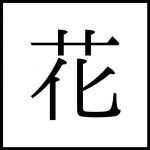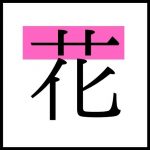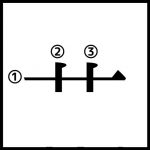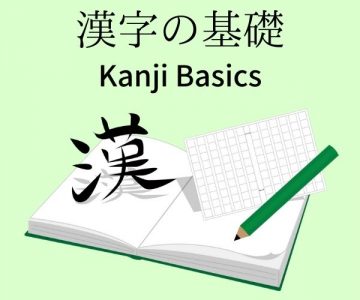Hi, I’m Ichiyo and I represent “Ichiyo’s Japanese Online Lesson.” I’m teaching Japanese to my students around the world.
Are you enjoying studying Japanese? Do you feel it is difficult?
Today, I’ll teach you what Japanese people do when we memorize kanji.
We can’t read Japanese sentences without knowledge of kanji, therefore we have no choice but to have to learn kanji.
Before studying kanji, we have to quickly learn hiragana and katakana. If you don’t know these two writing systems, please check out “Ichiyo’s Kanji Textbook Part 1 (PDF).”
After you can confidently read and write hiragana and katakana, please continue reading this page.
Memorizing Kanji Readings (On-yomi and Kun-yomi)
Each kanji has different readings. ※Depending on the kanji, for example some kanji only have one on-yomi reading, whilst other kanji may only have one kun-yomi reading. There are two types of kanji readings. These are called on-yomi and kun-yomi.
Japanese people memorize both the on-yomi and kun-yomi readings.
On-yomi: The original Chinese reading
Kun-yomi: The original Japanese reading
Kanji: 生
On-yomi: セイ・ ショウ
Kun-yomi: い-きる(生きる)・ い-かす(生かす)・ い-ける(生ける)・ う-まれる(生まれる)・ う-む(生む)・ は-える(生える)・ は-やす(生やす)・ き and so on.
The kanji「生」has many readings.

When Japanese people memorize kanji, we memorize the readings and vocabulary.
※In some kanji dictionaries, there are kanji readings which Japanese people seldom use. In Ichiyo’s kanji textbook, unused readings are excluded.
Memorizing a Kanji’s Multiple Meanings
One kanji can have multiple meanings. ※This isn’t a hard rule and some kanji only have one meaning.
「生」means “grow,” “born,” “create,” “birth,” “row,” “life,” “fresh,” “livelihood“ and so on.
When Japanese people learn a kanji, we memorize the meanings that the kanji has.
「誕生」: this kanji reads as「たんじょう(tanjō)」.「誕生」is composed of two kanji:「誕」and「生」. If you don’t know the meaning of「誕生」, you can guess the meaning from the kanji「生」, if you know the meaning of「生」.

「誕生」means “birth.” If we don’t know the meaning of「誕」, the kanji「生」gives us a rough approximation of the meaning.
Memorizing 熟語(Jukugo)
When we learn kanji, we memorize 熟語(Jukugo).
If you don’t know 熟語, please check out “Ichiyo’s Kanji Textbook Part 1 (PDF).” You’ll find more details of this particular kanji included in there.
Can you read and do you know meanings of the following 熟語?
生誕、誕生日、生命保険、野生、生鮮、学生、生涯
All of these kanji are composed with「生」. Each kanji has a different meaning.
When Japanese people memorize a kanji character, we memorize its 熟語(Jukugo)which use the kanji in compounds to create meaning.
By the way, the meanings of the above 熟語 are these:
生誕(せいたん)= birth、誕生日(たんじょうび)= birthday、生命保険(せいめいほけん)= life insurance、 野生(やせい)= wild、生鮮(せいせん)= fresh、学生(がくせい)= student、生涯(しょうがい)= lifetime
In Ichiyo’s Kanji textbook, many 熟語 are included to help you learn plenty of vocabulary.
Understanding 部首(Bushu)
One kanji has one 部首(Bushu). 部首 are the radicals that make up each kanji. It is said that there are 214「部首」. ※ depending on which kanji dictionary you consult.
Sometimes 部首 helps when guessing a kanji’s meaning. Memorizing 部首 makes memorizing each kanji’s stroke order easy.

The above kanji is read as「はな(hana)」and it means “flower.”

The pink part is the 部首 of the kanji「花」. The name of the 部首 is「くさかんむり」.「くさかんむり」means “grass.” The kanji meaning “grass” is「草(くさ)」. ※「くさかんむり」is one part of the kanji.
Therefore, the kanji which are related to “grass” generally have the 部首「くさかんむり」.
If you don’t know the meaning of a particular kanji, you can guess that the meaning is related to “grass” from the 部首.

The stroke order of 部首 is always the same. It makes memorizing each kanji’s stroke order easy.

The above kanji are「花」,「草」and「芝」. Each of these kanji has the 部首「くさかんむり」. The stroke order of「くさかんむり」as mentioned is always the same.
After you memorize the stroke order of the 部首, all that is left is to memorize the rest of a kanji’s strokes and you have learnt how to write the kanji.
By the way「草(くさ)」means “grass” and「芝(しば)」means “turf.”
Understanding 部首 helps to roughly figure out a kanji’s meaning and it makes it easy to memorize the kanji’s stroke order.
If you want to learn more about部首, please check out “Ichiyo’s Kanji Textbook Part 1 (PDF).”
Memorizing the Kanji Stroke Order
Each kanji has a stroke order. For example, the stroke order of the kanji「空」is like this.

Memorizing a kanji’s stroke order.
Review of “What do Japanese People do When Memorizing Kanji?”
Did you understand how Japanese people memorize Kanji?
・Japanese people memorize each kanji’s on-yomi and kun-yomi readings.
・When Japanese people learn a kanji character, we memorize some of the meanings that the kanji has.
・When Japanese people memorize a kanji character, we memorize the 熟語(Jukugo)which are the compounds the kanji is paired with.
・Understanding 部首 helps us to roughly figure out a kanji’s meaning and it makes it easy to memorize a kanji’s stroke order.
・Memorizing kanji stroke order.
When you memorize kanji, please remember the above points.
If you want to learn the basics of kanji, please check out “Ichiyo’s Kanji Textbook Part 1 (PDF).” It is for beginners who are unfamiliar with kanji and want to learn the fundamentals.
